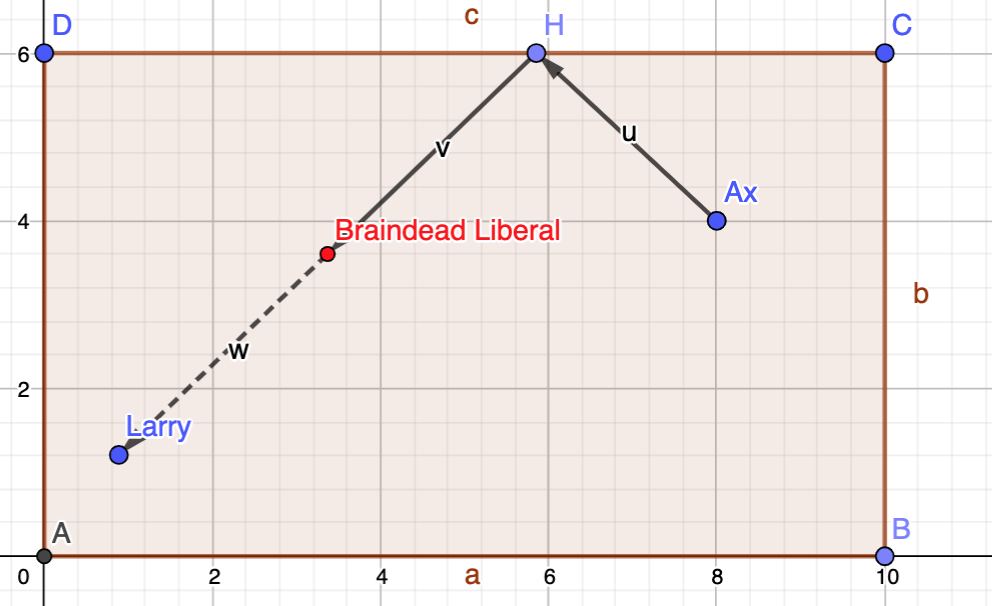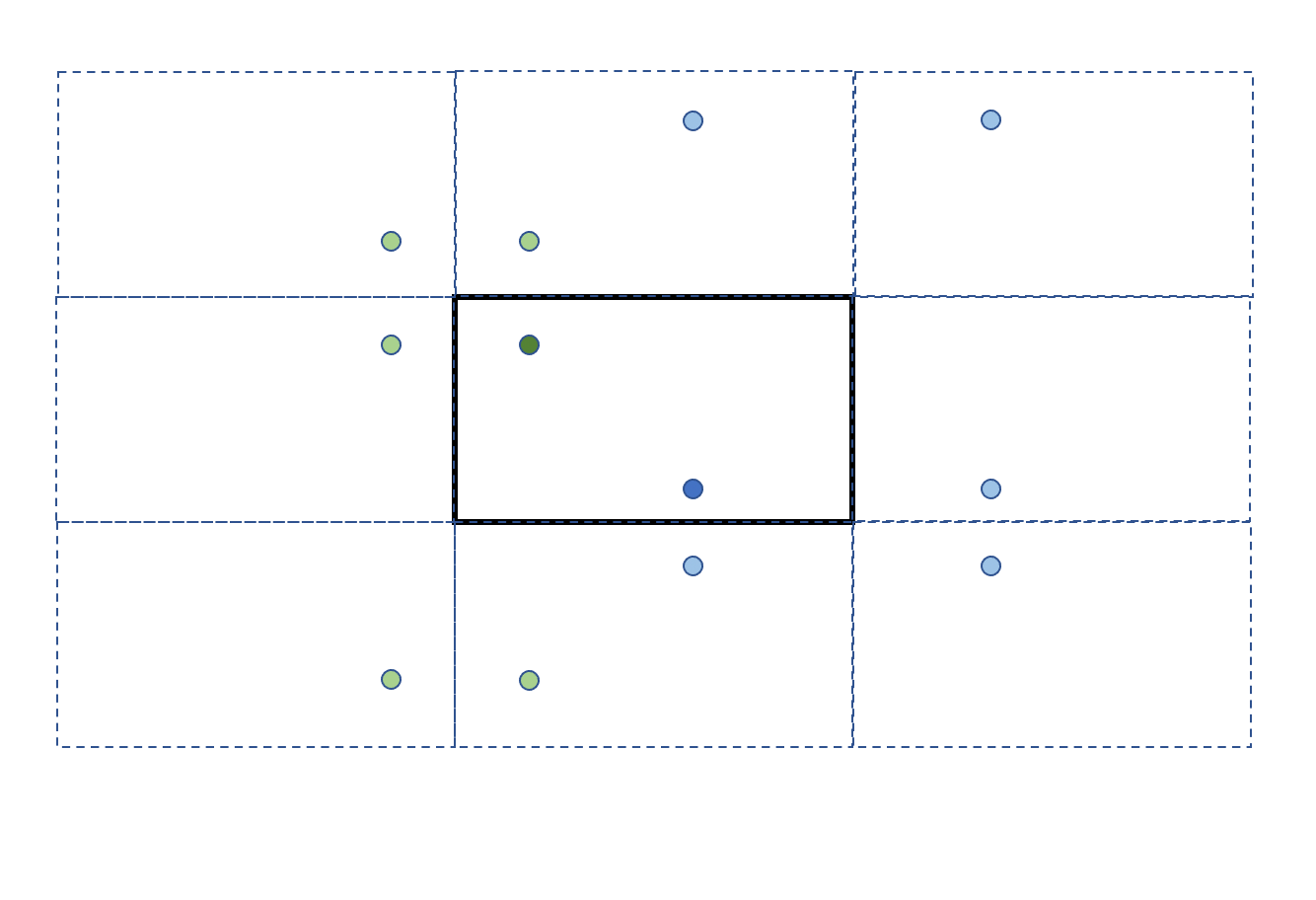Puzzle time - don't waste braindead liberals
-
Yes so the midpoints, shifted if necessary, of the following segments:
A0-L0
A0-L1
A0-L2
A0-L3
A0-L4
A1-L2
A1-L3
A1-L4
A2-L3
A2-L4
A3-L4Where A0 and L0 are the positions of Ax and Larry respectively. and A1-4 and L1-4 are their apparent positions in the 4 mirrors that surround them.
-
If you want some data to play around with: I wrote down 10 lines of code to help me verify my method, which also supports your approach without many modifications (which shows that you are not far off from mine).
For instance, for this setup:
larry = (1.0,2.0) ax = (8.0,5.0) width = 10.0 height = 6.0your approach yields the following 25 midpoints:
[(4.5,3.5),(4.5,7.5),(4.5,1.5),(13.5,3.5),(3.5,3.5),(4.5,4.5),(4.5,8.5),(4.5,2.5),(13.5,4.5),(3.5,4.5),(4.5,-1.5),(4.5,2.5),(4.5,-3.5),(13.5,-1.5),(3.5,-1.5),(6.5,3.5),(6.5,7.5),(6.5,1.5),(15.5,3.5),(5.5,3.5),(-3.5,3.5),(-3.5,7.5),(-3.5,1.5),(5.5,3.5),(-4.5,3.5)]which, when shifted back, yield these 11 coordinates for BDLs:
[(3.5,1.5),(3.5,3.5),(3.5,4.5),(4.5,1.5),(4.5,2.5),(4.5,3.5),(4.5,4.5),(5.5,3.5),(6.5,1.5),(6.5,3.5),(6.5,4.5)] -
OK, so this is what I got.
||
-
Create an infinite grid of copies of the room by mirroring the room, with the original room in the center. Each copy gets a copy of Ax (but not of Larry). Now there's a 1:1 correspondence between the possible attacks and the straight lines from Ax copies to Larry.
-
Consider the set of midpoints of those straight lines, reflected back to the original rectangle.
They form 16 distinct points. Why only 16? It turns out that if you move by 4 rooms on the infinite grid in any direction, the midpoint (reflected back) is the same. Consider for instance the grid at (0,0) (the original room) vs (4,0). The midpoint lies in the room at (2,0), which has the same layout as the original room (because it was mirrored twice). That's why situation from (4,0) is basically like a magnified version of the original situation at (0,0). A similar argument can be made for moving by 4 rooms in any other direction. Hence it is sufficient to consider any 4x4 square of rooms.
If you are interested, I wrote a few lines of code to compute the coordinates that I'm happy to share.
|| -


